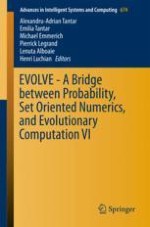2018 | OriginalPaper | Buchkapitel
Multi-centroid Cluster Analysis in Malware Research
verfasst von : Ciprian Oprişa, George Cabău, Gheorghe Sebestyen Pal
Erschienen in: EVOLVE - A Bridge between Probability, Set Oriented Numerics, and Evolutionary Computation VI
Aktivieren Sie unsere intelligente Suche, um passende Fachinhalte oder Patente zu finden.
Wählen Sie Textabschnitte aus um mit Künstlicher Intelligenz passenden Patente zu finden. powered by
Markieren Sie Textabschnitte, um KI-gestützt weitere passende Inhalte zu finden. powered by
